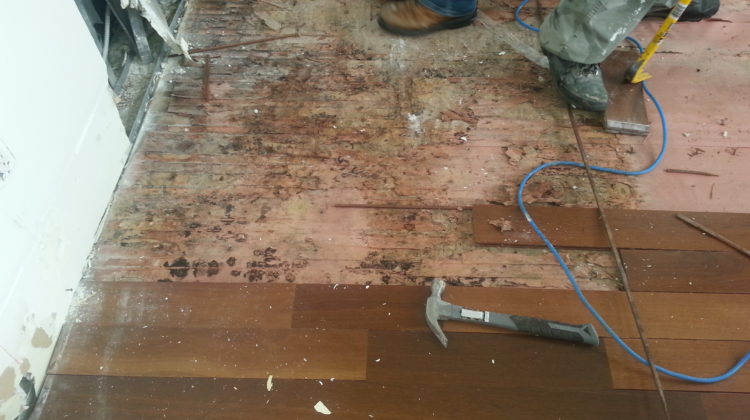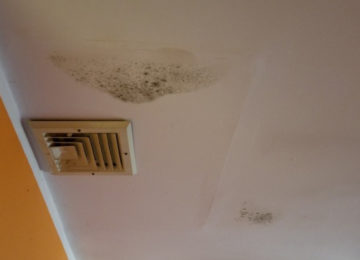As professionals in this field, we can find and remove the mold from your home or building. And do so in a timely manner. Our mold team has years of experience in the field, so we have truly seen it all when it comes to mold. Let’s take a look at some of the common myths regarding mold growth.
Bleach is an effective biocide to eliminate mold
Bleach is only effective on hard non-porous surfaces. Using bleach on wood, cement, sheetrock or plaster is ineffective.
No visible water no mold
High humidity is a very viable source of water to promote mold growth. Humidity at or above 60% will allow mold to grow. High humidity is one of the many reasons most sub-terrain basements have elevated mold issues.
No musty smell, no mold
Mold is generally dormant during the winter when humidity in our basements is very low. Once humidity or a water intrusion event germinates the mold spores, they reproduce causing microbial volatile organic compounds (MVOC’s) … or in layman terms, that musty mildew odor. May are misled that they solved their mold issue by running a de-humidifier to stop the odor without actually removing the mold.
Killing the mold is an effective remediation strategy…
According to the EPA and the CDC, the only way to effectively deal with mold is to remove the mold. By spraying and attempting to kill the mold but leaving behind the spores defeats the purpose since viable (alive and reproducing) and non-viable (dead or dormant) mold spores are just as allergenic to a person who is allergic or sensitive to mold.
Viable vs. Non-Viable mold spores
If mold is on non-structural porous materials these materials should be removed (sheetrock, cardboard boxes, moldings and insulation). If mold is on structural beams or foundations (structural materials), the mold should be physically scrubbed and cleaned from the surfaces. Leaving viable and non-viable mold spores is doing an ineffective job and dangerous to your clients.
Mold will not grow in cold climates
Certain mold species will thrive in warmer climates as many mold species will thrive in colder climates. Haven’t we all see mold grow on fruit in the fruit drawer of our refrigerator. Ever open a container of old leftover food that was in the back of the refrigerator to see the vibrant growth on top of the food…
We must test for mold to verify it is mold
Testing is generally required for litigation, medical or insurance issues. Reputable mold inspectors generally do not need to test for mold if the mold is visible. Testing may be requested during a clearance test or if the client wants to investigate if the mold is airborne.
We can eliminate mold from our homes
We can never completely eliminate mold. Mold is ubiquitous; it is everywhere. What we expect is the level of indoor spores to be proportional to the outdoor levels. We should never see physical mold.
Mildew is different than mold and is not as harmful.
Mold and mildew are both types of fungi. Mildew is a specific kind of mold, usually with a flat growth habit. Some use the term mildew to soften the rhetoric however both mildew and mold are just as allergenic.
Toxic or non-toxic molds
Certain species are more toxic than others but for the person who is allergic or has a compromised immune system, the young or elderly any elevated mold specie may set off a life-threatening reaction.
The color of mold identifies the mold
The only true way to identify a mold genre or specie is with testing by a certified mycology lab. A single genre of mold can come in various colors which may be determined by the mineral content in the water, the biologicals it is feeding on and PH. There are hundreds of thousands of different species of fungi.
Contact New York Indoor Air Quality Solutions Today
New York Indoor Air Quality Solutions provides mold cleaning and removal services for clients across Long Island, New York including many out east and in the following areas: Hampton Bays, West Hampton, South Hampton, East Hampton, Bridgehampton, Sag Harbor, Water Mill, Quogue and Amagansett. NYIAQ are leaders in handling mold problems for those who live on the East End of Long Island and can quickly remedy the issues.
For more information about our mold testing and remediation services on Long Island, New York, please contact us today. When you reach out, we will gladly answer any questions or concerns you may have regarding mold and how we can help. We offer a wide variety of mold services from inspections to removal and everything in between. If you are having problems with mold contamination and need help, get in touch with New York Indoor Air Quality today!


